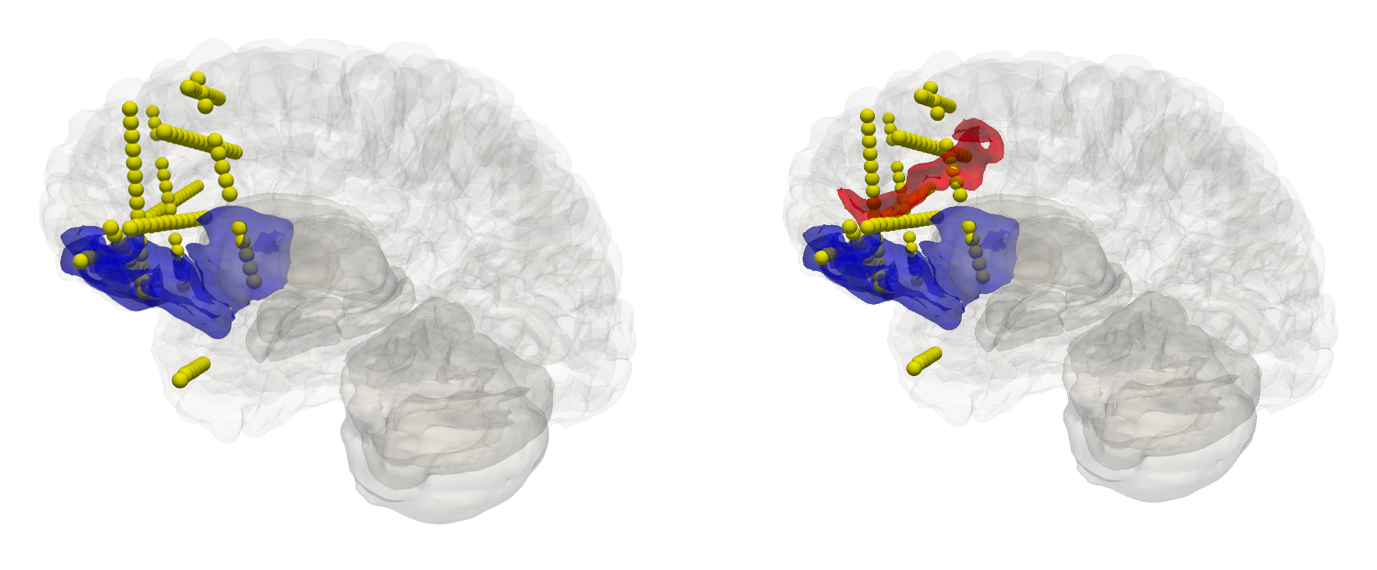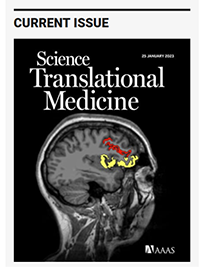- Press Release
Personalised brain modeling technique may lead to breakthroughs in clinical epilepsy trial
26 January 2023
The current edition of Science Translational Medicine highlights virtual models of patients’ brains as a new tool in brain medicine.
Researchers of the Human Brain Project (HBP) have published a new study in Science Translational Medicine presenting advanced brain modelling methods for epilepsy clinical care. The article, which is featured on this week's cover of the journal, describes the methodology used in the EPINOV clinical trial (Improving Epilepsy surgery management and progNOsis using Virtual brain technology). The personalized brain modelling approach has been developed over several years in the HBP, and is supported by the digital research infrastructure EBRAINS.
To create personalized brain models, the researchers use a simulation technology called The Virtual Brain (TVB), which HBP-scientist Viktor Jirsa at the Aix-Marseille University in France has developed together with collaborators. For each patient, the computational models are created from individually measured anatomy, structural connectivity and brain dynamics data.
For epilepsy, the approach is currently being tested in a large-scale clinical trial to provide a computational, predictive tool in surgery preparation.
Even though for many patients, epileptic seizures can be controlled by drugs, almost one-third of patients do not respond to medication. For this group, surgical removal of the epileptogenic zone, the brain area from which the seizure originates and propagates, presents the only treatment option. Currently, the procedure has a 60% success rate.
The TVB technology enables clinicians to simulate the spread of abnormal activity during epileptic seizures in a patient’s brain, helping them to identify the target areas better. The simulations are personalised for each patient, effectively providing a virtual epileptic patient (VEP) tailored to each individual real one. The approach has been tested in several retrospective studies, the latest one published this year in Epilepsia. The clinical trial is expected to run until 2025.

Ongoing work in the HBP uses the EBRAINS research infrastructure to further improve the method's predictive power with new high-resolution data from the HBP’s multilevel human brain atlas. “Computational neuromedicine needs to integrate high-resolution brain data and patient specificity,” explains Jirsa. “Our approach heavily relies on the research technologies in EBRAINS and could only have been possible in a large-scale, collaborative project such as the HBP."

Reference:
Wang et al. Delineating epileptogenic networks using brain imaging data and personalized modeling in drug-resistant epilepsy, Science Translational Medicine, 2023, DOI: 10.1126/scitranslmed.abp8982
Julia Makhalova et al. Virtual epileptic patient brain modeling: Relationships with seizure onset and surgical outcome. Epilepsia 2022. DOI: 10.1111/epi.17310
Text by Roberto Inchingolo
Media Contact:
Peter Zekert
Tel.: +49 2461 61 96860
press@humanbrainproject.eu
ABOUT THE HUMAN BRAIN PROJECT
The Human Brain Project (HBP) is the largest brain science project in Europe and stands among the biggest research projects ever funded by the European Union. It is one of the three FET Flagship Projects of the EU. At the interface of neuroscience and information technology, the HBP investigates the brain and its diseases with the help of highly advanced methods from computing, neuroinformatics and artificial intelligence, and drives innovation in fields like brain-inspired computing and neurorobotics. As a lasting contribution to the global science community, the HBP created EBRAINS, an open European research infrastructure that allows scientists and technology experts to seamlessly collaborate, accelerating advancements in the fields of neuroscience, computing and brain-related medicine.
ABOUT EBRAINS
EBRAINS is a new digital research infrastructure, created by the EU-funded Human Brain Project, to foster brain-related research and to help translate the latest scientific discoveries into innovation in medicine and industry, for the benefit of patients and society. It draws on cutting-edge neuroscience and offers an extensive range of brain data sets, a multilevel brain atlas, modelling and simulation tools, easy access to high-performance computing resources and to robotics and neuromorphic platforms.
All academic researchers have open access to EBRAINS’ state-of-the art services. Industry researchers are also very welcome to use the platform under specific agreements. For more information about EBRAINS, please contact us at info@ebrains.eu or visit https://ebrains.eu/.



